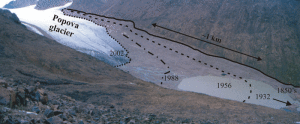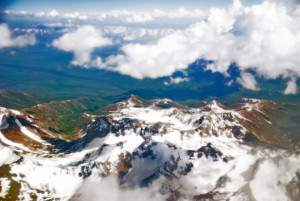“The Atlas of Food: Who Eats What, Where, and Why” by Erik Millstone and Tim Lang is a fascinating book, filled from cover to cover with atlases of the world depicting different food issues world wide. So far I’ve written a lot in general about food issues in the U.S., but race is not just an issue in this country. The races that populate the United States come from the greater context of the entire world. As our food system has globalized, it has affected countries of all shapes, sizes, populations, landscapes, economies, health statuses. The food system has consequences for not only the disparities within the affluent, dominant country we live in, but also for the well-being of the world at large.
A paradox of the modern world is the bounty of food available while many go hungry. People of both developed and developing countries are overweight, even deathly obese, while others are morbidly underweight and malnourished. Nutrient deficiencies occur for a variety of reasons: basic energy and food shortages, lack of specific nutrients in available food, and diseases or bacteria that hinder nutrient absorption. Micronutrient deficiencies and their syndromes are most common in developing countries in conjunction with other food-related disparities. Africa and West Asia, countries like Mali, Ethiopia, India, and Iran, have high concentrations of vitamin A and iodine deficiencies[1], and these areas and their races experience other aggressions from our food system, while the U.S. and other industrialized countries tend to reap the benefits.
Climate change is another huge food issue that affects the agricultural production of areas already struggling to feed their peoples. “It is now clear that the pollution, soil degradation, and loss of habitat and biodiversity caused by current methods of food production and transport are going to make it difficult for current levels of productivity to be maintained or improved on in the future,” write Millstone and Lang (22). According to the atlas included on page 23, North America and East Asia are projected to be the least affected in their cereal production in 2050-80, while Sub-Saharan Africa, Western Europe, and South Asia will all experience a 1-19% decrease. Other areas of the world may experience increase, but only because they are either already mild or colder environments that will be warming up, increasing agricultural productivity.
Changing climates tend to affect small farmers and local economies more directly than industrialized systems, and these farmers struggle to adapt to the new agricultural environment. In “Where Our Food Comes From: Retracing Nikolay Vavilov’s Quest to End Famine,” Gary Nabhan travels through the ‘Centers of Diversity of Cultivated Plants’ that the scientist Vavilov identified decades earlier. Nabhan compares his experiences to Vavilov’s notes, and examines the changes in climate, agricultural practice, and food production of specific geographies and their communities. For instance, in the early 1900s, the fields of the Pamir Mountains in central Asia were home to some forty species of crops of all food groups.[2] The slow glacier melt of the mountaintops built up vast watersheds, providing the ideal amount of water despite low precipitation rates. This consistent seasonal water source allowed Pamiri farmers to raise such diverse crops and sustain healthy, balanced diets for themselves. However, climate change has greatly increased the rate of glacier melt, leaving some glaciers at less than 50% their original volume in only a few decades. The increased influx of water leads to mudslides and other natural effects that disrupt the arable land and crop production. As a result the peoples’ food security may be decreased, and the Pamiri people may no longer be able to share their food with cities further south, which are currently heavily dependent on the mountain regions for food.
 (This photo isn’t necessarily from the Pamir mountains, but is a good depiction of glacier melt in general)
(This photo isn’t necessarily from the Pamir mountains, but is a good depiction of glacier melt in general)
The same areas that are most affected by nutrient/food deficiencies and climate change are parts of the world where with higher “agricultural population per hectare of arable and permanent cropland”[3]. This means that there are more people who rely on the land as their primary food source. They farm the land themselves and use its harvests to support their communities. If these people are also the ones affected most by deficiencies and climate change, they are affronted on various sides by the industrialization of the food system. As the climate worsens conditions for food production, energy and nutrient deficiencies will only increase. Local food security will decrease, and more food will need to be imported, further spreading the innutritious Western (and dominating) diet. The people living on the agricultural lands of Africa and Asia (primarily) are not contributing to the problems in the food system, they only bear the heaviest weights of the consequences. This may be better described as “geographism” than racism, but race is closely tied to geography in this instance. The bottom line is that the Western culture, dominated by Whites in power, has created a system of disadvantages for other cultures and races based on food, a basic need for every human. This is indeed racism, though much more covert than lynching and other hate crimes that make the news. It is so engrained into our perspectives that we don’t think about or realize it.
I hope this blog has been troubling yet inspiring for all of my readers; it has been for me. Let’s change our food system. Can we counter the racism embedded in the nourishment each of us needs every day?
[1] “The Atlas of Food: Who Eats What, Where, and Why”, Erik Millstone and Tim Lang
[2] “Where Our Food Comes From”, Gary Paul Nabhan, pg. 54.
[3] “The Atlas of Food: Who Eats What, Where, and Why”, Erik Millstone and Tim Lang, pg. 53


This was very interesting to read. I never thought of race and food the ways that you have portrayed which are very insightful and clear. It was very sad to read about how certain people around the world have to deal with the food mishaps that they ay have and we just have food assessable all the time. Especially when you mentioned Africa and Asia. How race and geography is so highly connected and certain people in power have better advantages. Great Post !
First of all, I want to say that I really enjoyed reading every post about this topic. It was such an interesting take on racism in our world, and one that I will take with me outside of RCL. This topic was troubling, but I am very glad you shed some light on it and gave your readers great insight and information. Regarding this post, it really makes me sad that I live in a place/country where food is so available to me, whether it is at my house, at restaurants, or the dining commons buffet. It troubles me that I can easily eat pounds and pounds of food, while some people may not eat for days at a time. It is also troubling to think that places where the climate changes are affecting the land and food, are the places and people that need that food the most. I love your statement that our Western culture has created a systems of disadvantages for other cultures, and I wish this didn’t have to be the truth.